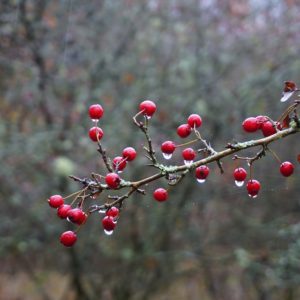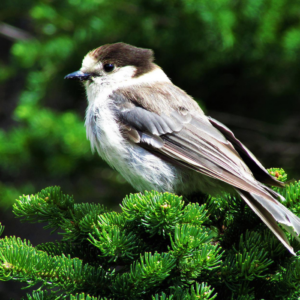The Wandering Waxwings
Walking through the forests of Canada, and the northern United States, one may have heard the atmospheric trilling of the Bohemian Waxwing. These beautiful, greyish brown, birds with their peach colored mask markings, can be seen flitting to and fro amidst the trees living up to their namesake; they move as unpredictably as the wind they fly on.
Bohemian Waxwings are nomadic by nature and one individual, was recorded flying 280 miles, 450 kilometers, in just 11 days. A waxing banded by a research team in British Columbia recorded the same bird in South Dakota thirteen days later. Their stamina and natural instinct to travel makes it hard to discern when bird watchers may see them but there are a few things that might escalate one’s chances.
You are what you eat
Bohemian Waxwings are fruit fiends, even in the cold northern winters they rely primarily on fruit specifically from a few plants; Juniper, holly, and mountain ash berries are a primary source of food for them in the winter. The waxwings have an uncanny ability for finding fruit such as these berries, and a flock can devour an entire bush in minutes.
And fun fact: the Bohemian Waxwing acquire the red tips on its wings, and the yellow tips on its tail specifically from the fruit that it ingests!
Carotenoid pigments are what give certain plants, vegetables, berries, and other fruit; red, orange, and yellow, coloring. The carotenoid pigments from the fruit the waxwings eat has appeared on their feathers. As the bird ages these red and yellow tips on their feathers will grow longer as well.

Behaviour
Unlike many singing birds the Bohemian Waxwings hold no territorial breeding ground, partly due to their nomadic nature. They will often be seen flocking with other Bohemian Waxwings but have even been observed flocking with robins and cedar waxwings during the winter migration.
Another notable behaviour is that this species is monogamous and will even stick in family groups for migration. Both the mother and father help, build the nest, hunt for food, and feed their young. Even after the young waxwings leave the nest, the parents will continue to help feed them for a few days, and the young may stay close to their parents for the fall.
The Bohemian Waxwing is a regal and beautiful bird, whose lifestyle may make it hard to find. Their population often fluctuates, but sadly there has been a steady decline in population since 1970. This can be attributed to collisions with buildings and vehicles, and also pesticides being used on the fruit they like to eat. They are not on a conservation watch list as of yet, but it is important to ensure their habitats are protected.



